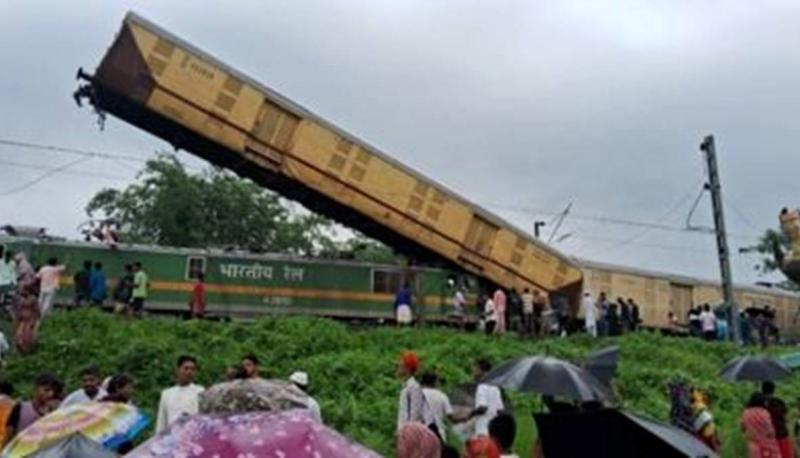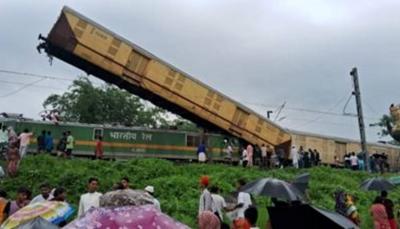A police official announced that at least 13 people have died and dozens more have been injured after a freight train collided with a passenger train in West Bengal, eastern India, on Monday. Rescue teams are working to free passengers who are feared to be trapped inside the train. Media outlets published images of the incident showing containers from the freight train scattered on the tracks, with one carriage overturned on its side, nearly vertical.
Abhishek Roy, a senior police official in the Darjeeling district of West Bengal where the incident occurred, told Asia International News Agency: "We have rescued between 25 and 30 injured people... their injuries are not life-threatening. We rescued them along with their luggage."
Railway authorities expressed concerns about potential individuals trapped inside the wrecked carriages, but no further details have been reported. Several local residents told the news agency that they heard a loud noise and saw the incident when they arrived at the site.
Police officer Abhishek Gupta told AFP from the scene: "Three carriages from the express train derailed." The chief minister of the state announced on Monday that a freight train collided with a passenger train in the Darjeeling area. Mamata Banerjee added in a post on X: "I was shocked to just learn of the tragic train accident in... the Darjeeling area and await details."
Banerjee stated that a freight train collided with the "Kanchanjunga Express," which connects the northeastern states of Assam and Tripura with West Bengal. Local media released videos of the collision between the two trains, showing rescue workers and some local residents at the site.
India has one of the largest railway networks in the world and has experienced numerous disasters. In 1981, a train derailed while crossing a bridge in Bihar, resulting in around 800 deaths. In June of last year, a collision involving three trains led to nearly 300 fatalities in Odisha. In recent years, India has invested massive amounts to upgrade the network, including modern stations and electronic signaling systems.




